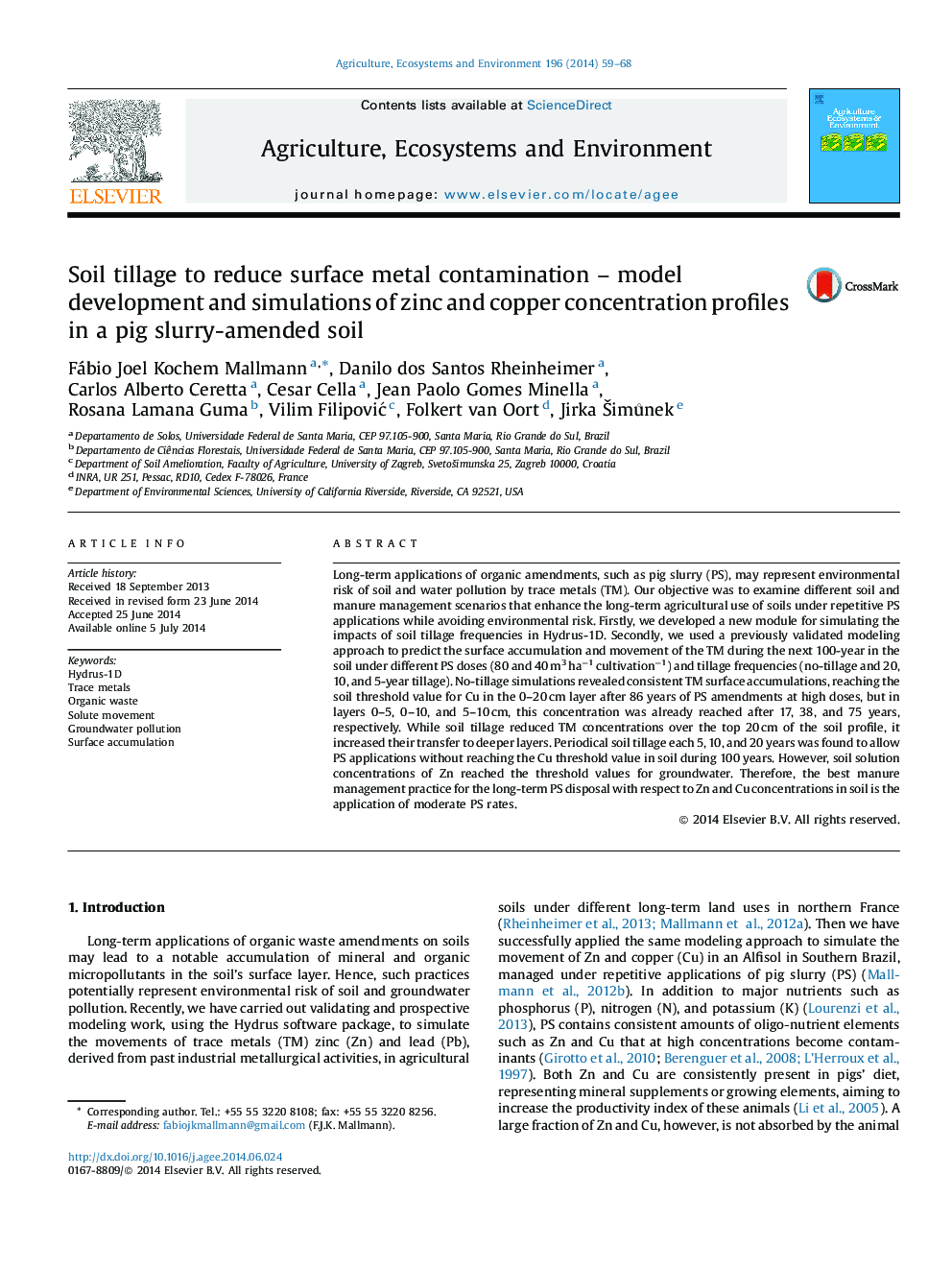| Article ID | Journal | Published Year | Pages | File Type |
|---|---|---|---|---|
| 2413994 | Agriculture, Ecosystems & Environment | 2014 | 10 Pages |
Abstract
Long-term applications of organic amendments, such as pig slurry (PS), may represent environmental risk of soil and water pollution by trace metals (TM). Our objective was to examine different soil and manure management scenarios that enhance the long-term agricultural use of soils under repetitive PS applications while avoiding environmental risk. Firstly, we developed a new module for simulating the impacts of soil tillage frequencies in Hydrus-1D. Secondly, we used a previously validated modeling approach to predict the surface accumulation and movement of the TM during the next 100-year in the soil under different PS doses (80 and 40Â m3Â haâ1Â cultivationâ1) and tillage frequencies (no-tillage and 20, 10, and 5-year tillage). No-tillage simulations revealed consistent TM surface accumulations, reaching the soil threshold value for Cu in the 0-20Â cm layer after 86 years of PS amendments at high doses, but in layers 0-5, 0-10, and 5-10Â cm, this concentration was already reached after 17, 38, and 75 years, respectively. While soil tillage reduced TM concentrations over the top 20Â cm of the soil profile, it increased their transfer to deeper layers. Periodical soil tillage each 5, 10, and 20 years was found to allow PS applications without reaching the Cu threshold value in soil during 100 years. However, soil solution concentrations of Zn reached the threshold values for groundwater. Therefore, the best manure management practice for the long-term PS disposal with respect to Zn and Cu concentrations in soil is the application of moderate PS rates.
Related Topics
Life Sciences
Agricultural and Biological Sciences
Agronomy and Crop Science
Authors
Fábio Joel Kochem Mallmann, Danilo dos Santos Rheinheimer, Carlos Alberto Ceretta, Cesar Cella, Jean Paolo Gomes Minella, Rosana Lamana Guma, Vilim FilipoviÄ, Folkert van Oort, Jirka Å imůnek,
